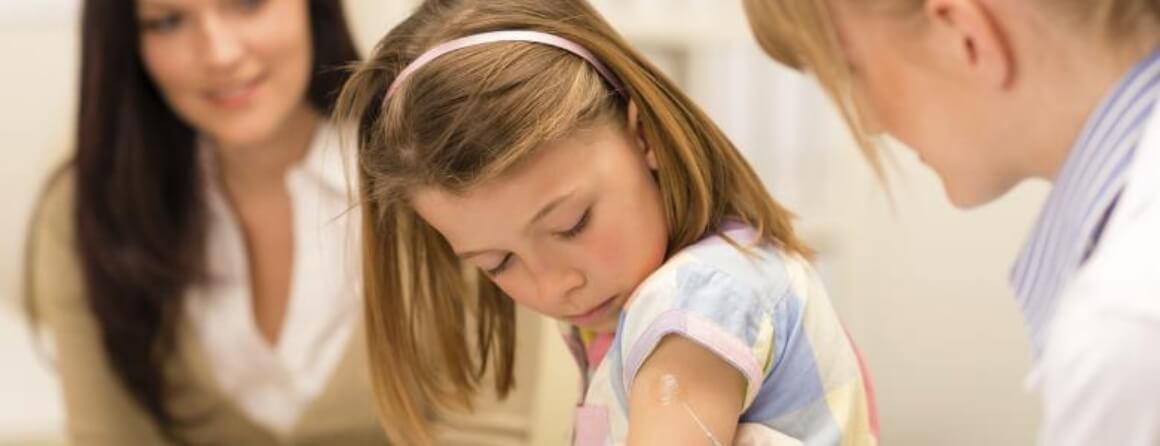Measles vaccination common questions answered

Associate Professor Margie Danchin is a Senior Research Fellow in the Vaccine and Immunisation Research Group (VIRGo) at Murdoch Children's Research Institute. She answers some helpful questions for parents of small children amid the recent measles cases detected in Victoria.
What children are most at risk of contracting measles following these cases?
Young children who have not received the first dose of the MMR (measles, mumps, rubella) vaccine, given at 12 months and those who are immuno-compromised due to an immune system illness or from taking immunosuppressant medication (ie post-transplant medication) are most vulnerable.
Children who have not had two doses of the measles vaccine – the second dose is given at 18 months – are more susceptible to infection.
If babies have been fully vaccinated, can they still get the measles and how badly?
Two doses of the MMR vaccine – given at 12 and 18 months of age – will protect 99 out of 100 children, so it is an extremely effective vaccine. One dose will only protect approximately 93 out of 100 children which is why two doses are needed for high-level protection in the community.
What can families do to protect or minimise the chance of their children contracting measles if their children are too young to be vaccinated?
Children who are less than 12 months old and have a confirmed exposure to a measles case (ie the index or primary case has confirmed measles, not just suspected measles) should be offered post-exposure prophylaxis. If it’s within 72 hours of exposure and the child is older than nine months, MMR vaccine should be offered. They will still need to have the recommended two doses of MMR vaccine at 12 and 18 months as well as per the routine National Immunisation Program schedule.
If the child is younger than nine months, or the child is at high risk of measles, or the child is immunocompromised and it’s been more than 72 hours since exposure to the virus but within six days, immunoglobulin may offer some protection or modify the clinical course of disease. Immunoglobulin is a concentrated antibody solution obtained from plasma from healthy donors.
The incubation period for measles is between seven to 21 days. The rash appears about 14 days after exposure so if practical a child can be kept away from childcare or school if there is fear of an outbreak. A family may choose not to travel until the child is over 12 months and has received at least one dose of the MMR vaccine.
Why is herd immunity important and what percentage of the population has to be vaccinated to achieve this?
Herd immunity means there is a high level of immunity or protection in the community against measles or other diseases and the risk of spread, or of unvaccinated individuals in the community becoming infected, is greatly reduced.
We know nine out of 10 people exposed to measles will develop the viral infection as it is one of the most contagious infectious diseases. High levels of vaccination to protect the most vulnerable in the community – the young, the elderly and the immunocompromised is needed.
For measles, 95 per cent of the population need to be vaccinated to prevent spread of the disease and this level is not currently achieved in most post codes in Australia.
What does your research show about the hesitancy to vaccinate children? Can we expect more of these outbreaks in future if this trend continues?
Our research shows that nearly half of all parents have some concerns about vaccinating their children, with higher degrees of hesitancy in about eight per cent of parents.
About a quarter of all parents worry that too many vaccines are given in the first two years of life or that vaccine ingredients may be toxic. Ten per cent are still concerned that the MMR vaccine may cause autism, which has been thoroughly disproved.
Under-vaccination is attributable to both acceptance and access issues, with recent Australian data published in the Medical Journal of Australia confirming that three per cent of parents choose not to vaccinate or partially vaccinate due to vaccine concerns.
The worry is that if parents’ concerns are not addressed, this proportion of parents will increase and vaccine coverage rates – which are relatively stable apart from discrete pockets of under-vaccination – will fall and that vaccine preventable disease (VPD) outbreaks will become more of a threat.
Effective interventions need to be developed to address vaccine hesitancy. These need to include effective and evidence-based communication strategies and educational resources to support improved knowledge on the risk of vaccines balanced against VPDs.
Parents need to be taught how to interpret risk, which for vacines is risk of the vaccine weighed against the risk of the VPD.
Does your research show any waxing or waning of the hesitancy to vaccinate – is it being countered at all by other voices urging to vaccinate for the health of all children?
We need an accurate tool to measure vaccine hesitancy in Australia. We have surveyed parents attending general paediatric outpatient, maternal and child health care centres and antenatal clinics but we need broader national data to track vaccine hesitancy in Australia over time.
It appears the proportion of people who choose to partially or not vaccinate their children is relatively steady at about three per cent but this may change and is definitely higher in certain communities or pockets in Australia.



